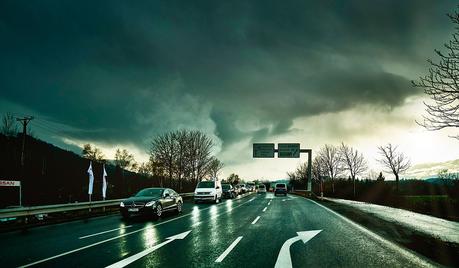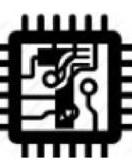 Road markings are there to guide and instruct the road user and make sure that traffic runs as smoothly and safely as possible. Roads without markings are therefore a recipe for chaos and accidents - and it is of utmost importance that the authorities make sure that all road signage is well-maintained. As roads, highways, and other forms of infrastructure continue to develop, more quality road markings are essential. Proper traffic markings ensure a high level of road safety.
Road markings are there to guide and instruct the road user and make sure that traffic runs as smoothly and safely as possible. Roads without markings are therefore a recipe for chaos and accidents - and it is of utmost importance that the authorities make sure that all road signage is well-maintained. As roads, highways, and other forms of infrastructure continue to develop, more quality road markings are essential. Proper traffic markings ensure a high level of road safety. Before marking a road, a quality marking company will make prior preparations. These include estimating the condition of a road and the load which it will be carrying. Such parameters will help them select which marking materials are the most suitable for that particular road. A highly trafficked road that is exposed to a harsh climate is likely to receive more abrasion and should be painted with long-lasting materials. These include climate-resistant paint and larger paint proportions.
Quality road marking
There are various types of marking materials available, and all vary in performance and price. These include solvent- and waterborne paints, cold plastics, and hot-applied thermoplastics. The latter is a popular solution which offers a lot of excellent characteristics;1. It is quick-drying
Hot-applied thermoplastic is a solid compound which becomes liquid when heated. It is heated to around 200°C on the application, but cools and sets within a few minutes. This is particularly useful for application in built-up areas as the road can become trafficable within a short period of time, thus causing minimum disruption to road users.2. It has strong adhesive properties
The thermoplastic material connects strongly with roads and is difficult to break or peel off. Thermoplastic is thus an ideal long-lasting solution, particularly in areas with high traffic and extreme weather.3. It is clearly visible
A good road marking should be visible all year round regardless of the amount of traffic that passes over it or the change in weather conditions. Even at night and on foggy days, road markings must be visible from an appropriate distance.A high level of night visibility depends among other things on the amount of glass beads embedded in the material and also on how well the applicator controlled the temperature during the installation.
Application of thermoplastic
Thermoplastic marking materials come in both liquid and solid form (preformed thermoplastic). Liquid thermoplastic is applied through spraying, by the screed, or through extruding. Spray thermoplastic application is done fast, using mobile equipment, and it also dries very fast. Extruded thermoplastic is also applied by the use of mobile equipment, but is much more viscous, hence it takes longer to dry. Screed thermoplastic application is done manually for small markings such as letters, symbols, and arrows.Preformed thermoplastic comes in sheets that are cut to size before application. The application company then cleans the road surface and places preformed thermoplastic on the road and heat with a blow torch flame. This type of road marking is a great solution for symbols and arrows, for example.
What different road markings mean
Traffic markings convey important messages for road users. They indicate how to drive on the road and may alert you of potentially dangerous conditions ahead.White and yellow lines
White and yellow are the most common colors used in road marking. White lines on the pavement show that traffic is traveling in your direction. A broken white line means that you can change lanes whereas a solid white line requires you to stay in your lane, but lane changes are not entirely discouraged. A double white line indicates that lane changes are prohibited.Yellow lines separate two-way roads. If the yellow center line is broken, you are allowed to pass on the two-way road. If the two yellow center lines are solid, you have to stay in your lane. Sometimes, one of the yellow center lines is broken while the other is solid. If you are driving next to the solid line, you may not cross lanes, but you can cross lanes if you are driving next to the broken line.
Symbol markings
Road markings also include symbols. A diamond symbol, for example, indicates a lane to be used by high occupancy vehicles. There are also bicycle lanes with bicycle symbols. Arrows show permitted movements while solid triangular rows mean that road users must yield.Markings can also alert users of hazardous conditions. For example, the letter X with two R’s beside it implies that there is a highway-rail crossing grade ahead. If there is a speed hump ahead, you will see wider lines progressing across a lane.
keywords: road marking specification, road marking specification in india, road marking dimensions, road markings standards, types of road marking paint, history of road markings

